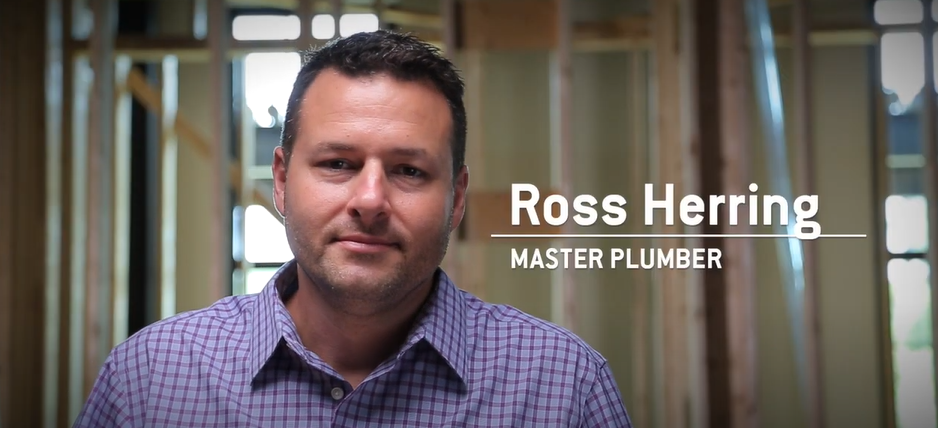Article
ChemDrain® CPVC: The Cost-Effective Choice for Chemical Waste Disposal
Liquid waste generated in commercial and academic laboratories requires a robust drainage system for the proper disposal of the effluent. Not only must a chemical waste drainage system possess resistance to a broad range of acids and corrosive chemicals, it must be able to handle the routine disposal of both hot and cold chemicals. Above all else, however, the material selection of the system must provide long-term value and meet budgetary constraints of the project.
The Enduring Legacy of CPVC in Chemical Waste Drainage
For more than 55 years, CPVC (chlorinated polyvinyl chloride) has been used in a variety of chemical-processing applications. Charlotte Pipe® ChemDrain® CPVC pipe and fittings are manufactured with a Corzan® CPVC compound and are specifically engineered to deliver years of reliable, problem-free chemical waste drainage service.
Today’s main alternative options to CPVC include polypropylene and polyvinylidene fluoride (PVDF).
“Traditional materials — such as borosilicate glass (Kimax®) and high silicon iron (Duriron®) — are still specified in some high-end laboratories, but are becoming increasingly obsolete as cost and/or availability edges them out of the market,” said Greg Nahrgang, Vice President, Technical Services and Product Development at Charlotte Pipe and Foundry. “While all of these materials have their pros and cons, Corzan CPVC is the only CPVC material delivering market-leading quality, reliability, and performance for the most demanding applications.”
Whether you’re specifying for a K-12, collegiate, commercial, or other institutional laboratory application, ChemDrain with Corzan CVPC has many benefits.
Three advantages for choosing ChemDrain with Corzan CPVC
1. A One-Step Installation Method Reduces Labor Costs
Most plumbing engineers can agree: Labor costs are the highest expense to account for on a pipe system installation. Therefore, it is crucial to select a material that minimizes installation time consumed on the job.
ChemDrain CPVC saves time and prevents the need for future maintenance through a simple, one-step solvent cement joining process. Once properly applied and cured, the solvent cement creates an intermolecular bond between pipe and fitting surfaces, ensuring the joint is permanent. Melted joints, corrosion of exposed internal heating wires, and burnthrough — all problems in the joining systems of heat-fused plastic products — are not possible with CPVC.
Corzan CPVC is the only CPVC material delivering market leading quality, reliability, and performance for the most demanding applications. Greg Nahrgang Vice President of Technical Services and Product Development
Additionally, solvent cementing has been used for decades to join thermoplastic pipe and fitting systems for a variety of applications. It is much easier to join than the mechanical or heat fusion approaches of polypropylene or PVDF systems, and there’s no expensive equipment to buy or rent. This means that contractors and maintenance crews will have a predisposed understanding of how to install ChemDrain when they show up on the job. This knowledge not only helps support the integrity of the system through proper application, but helps reduce costs by using less time on the jobsite to train and learn with new tools and processes.
Watch below for one plumber’s experience performing maintenance on a chemical waste system that regularly came apart at the joint in a large medical research university to understand why ChemDrain is a more reliable choice for plumbers and engineers alike.
2. A High-Temperature Resistance Reduces the Need for Maintenance, Replacement, and Repairs
Plumbing systems that can withstand high temperatures are less likely to suffer from wear and tear caused by exposure to hot chemical substances. This durability leads to a longer lifespan for the pipe and fittings, reducing the need for frequent repairs or replacements, and lowering costs over time.
CPVC can handle a wide temperature range, from hot to cold fluids, making it suitable for various applications in chemical waste systems. In fact, ChemDrain CPVC can convey liquids in gravity drainage applications at temperatures up to 220 F.
In contrast, other materials such as polypropylene can handle only a much more moderate temperature range (140 F to 180 F).
3. A Broad Chemical Resistance Ensures the System Remains Reliable Over Time
When specifying a chemical waste drainage system for a laboratory, one of the most crucial considerations is the chemical compatibility of the system with the materials used in the laboratory environment. Choosing a system with a broad chemical compatibility helps ensure that it will resist corrosion, deterioration, and degradation over time.
“One of the key advantages of Charlotte Pipe’s ChemDrain with Corzan CPVC System is its high resistance to a broad range of acids and caustic chemicals when properly diluted by flushing with water,” Nahrgang said.
Within certain temperature limitations, CPVC is inert to most:
Acids
Bases
Salts
Organic media (such as aliphatic hydrocarbons)
In addition, Charlotte Pipe ChemDrain CPVC solvent cement has been specially formulated for chemical resistance to caustics including hypochlorites, mineral acids, and other corrosive chemicals.
It is important to note that ChemDrain possesses limited resistance to fats, oils, and greases (FOGs) and chlorinated hydrocarbons and should not be applied for such uses. Please refer to Charlotte Pipe’s ChemDrain Technical Manual for a list of chemical-resistance data.
Due to its high chemical resistance, once a CPVC system is properly designed and installed, it is virtually maintenance-free. It will not rust, pit, scale, corrode, or promote interior buildup, providing years of trouble-free and low-cost service in chemical waste drainage applications.
ChemDrain vs. Other Chemical Waste Drainage Systems
CPVC overcomes many common problems that have been inherent in chemical waste piping systems up until now. Let’s review some of the areas in which CPVC outperforms alternative materials:
Glass and high silicon iron systems are cumbersome, fragile, and have a high initial cost, whereas ChemDrain pipe is lightweight, easy to install, and provides tremendous savings on labor.
Polypropylene lacks the ability to withstand the elevated temperatures that are common in some laboratory systems and doesn’t have as high of a resistance as ChemDrain to some highly concentrated acids.
While PVDF provides excellent resistance to strong acids, it is not recommended for many common alkaline solutions that ChemDrain can handle.
Whereas both polypropylene and PVDF are usually installed using time-consuming, complicated, and (at times) unreliable fusion or mechanical joining methods, ChemDrain employs a simple, single-step solvent cement joining process.
ChemDrain CPVC with Corzan is the Cost-Effective Choice
CPVC is easy to install, reliable, and competitively priced against alternative materials. When properly installed and used, its durability and resistance to chemical corrosion lower your total costs of ownership over the life of the system.
ChemDrain with Corzan CPVC Chemical Waste Drain System is the only CPVC material delivering market-leading quality, reliability, and performance for the most demanding applications. Find a Charlotte Pipe sales representative to learn more about specifying and installing ChemDrain in your next institutional, academic, or commercial laboratory project.




